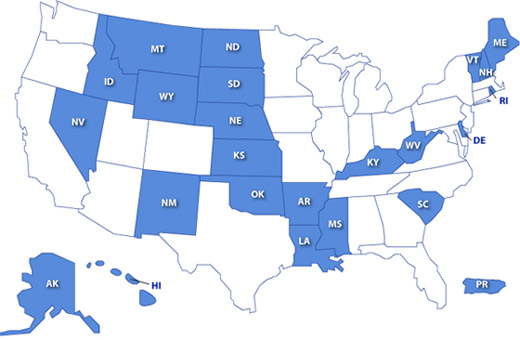What's the Big IDeA Behind the NNE-CTR?
The Northern New England Clinical Translational Research Network is funded through an Institutional Development grant (IDeA), a government-mandated program that supports states with historically low levels of funding from the National Institutes of Health (NIH). The goals of the IDeA Clinical Translational Research networks are to:
- Strengthen infrastructure supports for clinical and translational research
- Make investigators more competitive for research funding and programming
- Increase collaborative research in rural communities
As pictured on the NIH General Medical Sciences homepage, IDeA-eligible states include Vermont, Maine, and New Hampshire.

What is "Clinical"? What is "Translational"? And How Does this Network Work?
Good health is a combination of many factors from prevention to treatment. The NNE-CTR supports all parts of this spectrum. We fund the critical research that takes place in the clinical or laboratory setting (the "clinical" part). We ask communities what they need most and convene the teams--from researchers to community groups--that help usher research findings into the public realm where they can help everyday people (the translational part). This brings us to the "network" part. The NNE-CTR is here to foster, strengthen, broaden, and share the exciting work of our members--individuals, physicians, public health professionals, nonprofits, researchers, universities, and health systems--to improve the health of our neighbors.
Even when exciting new findings arise, it can take a long time--often decades--for discoveries to benefit everyday people in the community. We're here to help close that gap--to bring innovative ideas, therapies, and medications from the lab to the public more quickly. At the same time, physicians and community groups and other nonprofit organizations are seeing trends in the populations they serve, or they have developed processes that are helping people, and they want to better understand and share this knowledge. Here, we help translate this knowledge to the places--the communities and people--who need it the most.